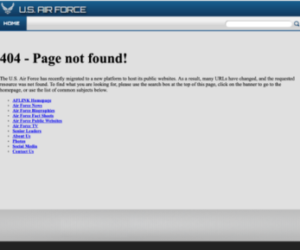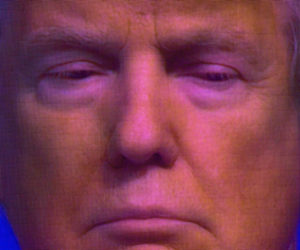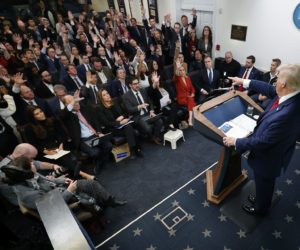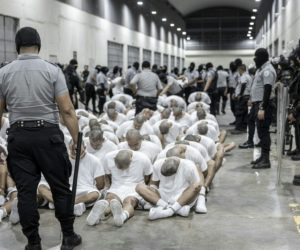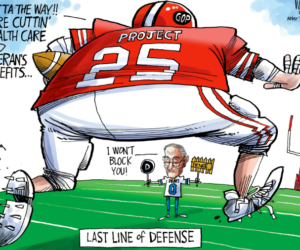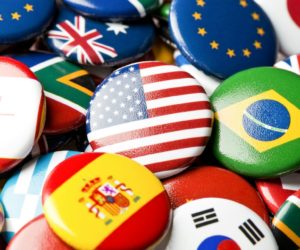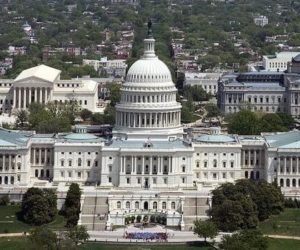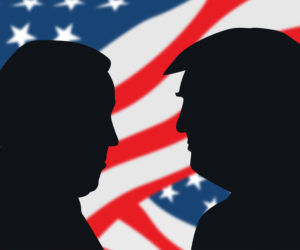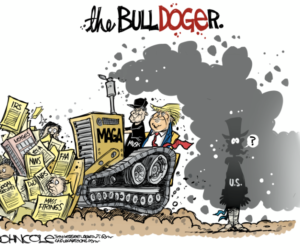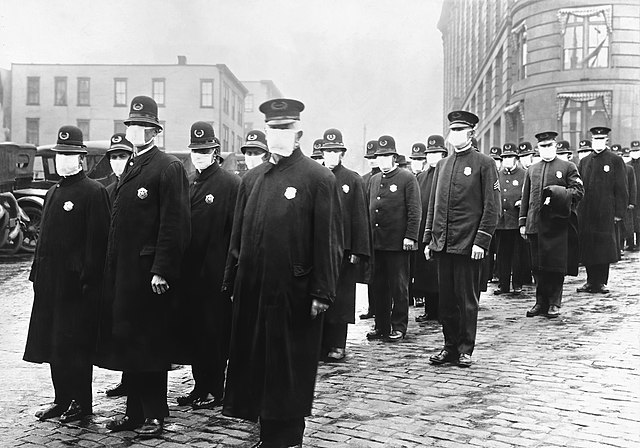
A virus is a submicroscopic agent that only replicates inside the cells of living organisms. Viruses are always attacking, always looking for a host to invade. They have caused numerous pandemics, including the 1918 influenza pandemic and the 2019 coronavirus pandemic. As we continue to combat the coronavirus, what can we learn from the American response a century ago to their pandemic?
January 1918 marked the beginning of the influenza pandemic. Some historians say it started in western Europe, others say it began in the United States. Wherever it started, this influenza strain was new, and deadly because there was no built-up immunity. Between January 1918 and early 1920 over 500 million people globally were infected (one third of the world’s population at the time!), leading to somewhere between 50 to 100 million deaths, depending on which historical analysis is examined. In the United States the virus infected one fourth of the population and killed approximately 650,000 people.
The pandemic came in four waves. The first wave lasted from January to July 1918, and the infections were relatively mild, resulting in few fatalities. A far more lethal strain emerged in August 1918 and continued through December, resulting in huge numbers of infections and fatalities. A third, somewhat less lethal strain emerged in January 2019 and continued to cause infections and fatalities until June. A fourth much less lethal wave continued into early 1920.
In the 1918 pandemic what tools did American health care practitioners have, or not have, to combat the virus? They did not have a flu vaccine for this new viral strain; flu vaccines were not available until the 1940s. There were no antibiotics to treat the secondary pneumonia bacterial infections that frequently followed the viral infections, which increased the lethality of the original infections. However, the medical community did understand that the virus was spread from person to person by airborne respatory droplets, through coughing and sneezing. Subsequently, mainly starting in the second wave, non-pharmaceutical interventions, such as isolation, quarantining, limitations on public gatherings, good personal hygiene, and disinfectants, were used to control the viral spread.
These interventions were applied very unevenly across the country because there was no national plan in place to combat the outbreak. Each state, and even each community within each state, created its own set of interventions to combat the outbreak. This led to wildly divergent rates of infections and fatalities in different localities, with those localities making no or little effort to slow the spread of the virus suffering the most infections and fatalities.
A comparison of the two pandemics indicates our unfortunate inability to learn from history. Both pandemics began with a new, lethal, viral strain for which there was no built-up herd immunity. There was no vaccine available for either virus, therefore rendering both situations as potentially disastrous. Denial and confusion plagued the responses to both viruses. There was no enforced national plan to confront either virus, and the state and community derived intervention responses have been uneven and contradictory.
The 1918 historical lesson that we can still benefit from is that the pandemic came in four waves over a two-year period. After the first milder wave was over in the summer of 1918 both the authorities and people in general assumed that the pandemic was over, and the few precautions that were in place were relaxed. We are in the first wave of our pandemic. Knowing that future waves of the coronavirus are a strong possibility, we are caught in a dilemma between two negatively correlated contradictory risks. If we loosen up the restrictions now we risk a second, perhaps more lethal, wave of the virus. If we don’t loosen up the restrictions we risk an economic catastrophe possibly worse than the Great Depression.
One possible way out of the dilemma: a vaccine. With an effective vaccine we could loosen up the restrictions without triggering future lethal waves. This is a hopeful solution because we certainly have the scientific ability to create an effective vaccine.

